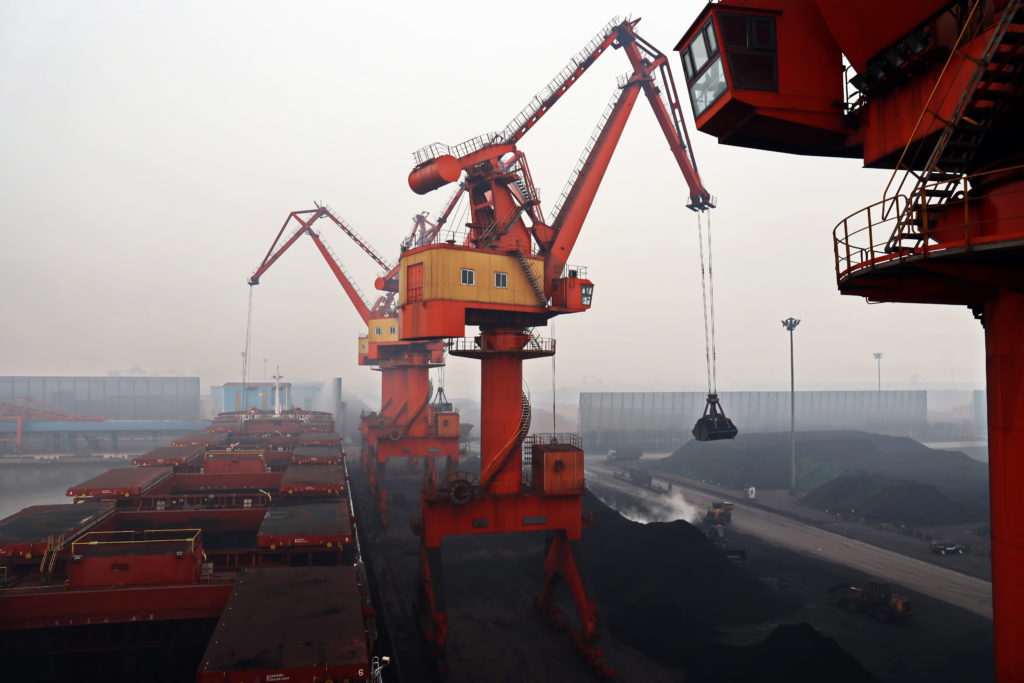Reuters | April 23, 2024 |

Cargo terminal for discharging coal cargos by shore cranes during foggy weather. Port Bayuquan, China. Stock image.
China’s coal consumption will fall by just one-third by 2040, according to a report by a European consultancy published on Tuesday, threatening climate targets that call for phasing out much of global coal use by 2040.

The International Energy Agency has said that global coal power capacity has to be eliminated by 2040 to keep average global temperature rises within the key threshold of 1.5 degrees Celsius (2.7 degrees Fahrenheit).
However, Norwegian risk assessment firm DNV said in its report that its findings indicate China’s coal consumption – the world’s biggest – will see a “minor uptick” in the next two years and then fall by one-third by 2040, ending up at around 25% of its peak in 2050.
The findings underscore China’s outlook on fossil fuels. In September, former climate envoy Xie Zhenhua told the COP28 climate talks that it would be “unrealistic to completely phase out fossil fuel energy”.
China will continue using coal despite a massive ramp-up in renewable generation, which will make up 88% of China’s power generation mix in 2050, the report predicts.
China approved another 114GW of coal power plants last year, up 10% from 2022, and the iron and steel sectors are on track to overtake power as the biggest consumers of coal by mid-century. Coal-to-chemicals will also make up a significant share of the remaining demand, according to the report.
Decarbonization of the steel sector through new methods such as cleaner electric arc furnace technology is lagging in China, research has shown.
Natural gas consumption will stay part of the energy mix with consumption falling only 2% from 2022 levels by 2050, the report said.
Still, China is “close” to meeting its own target of carbon neutrality by 2060 if it accelerates decarbonization of some sectors, particularly manufacturing, the report added.
DNV forecasts China’s carbon emissions peaking by 2026, well before the official goal for climate-warming emissions to peak by 2030, but slower than a forecast by the Centre for Research on Energy and Clean Air that emissions could go into “structural decline” in 2024.
China’s total energy demand, which has been growing at around 3% per year, is seen decelerating through the rest of this decade. It will peak in 2030 and then fall another 20% by 2050, the report found.
The world’s biggest crude importer, China is poised to phase out oil more rapidly than coal, driven by electrification. The report sees oil demand in China’s road sector falling by 94% by 2050 – a faster transition than that predicted by China’s oil majors, which forecast gasoline demand halving by 2045.
Total oil consumption will halve by 2050 from its 2027 peak, DNV said, with 84% of that still being met by imports.
But oil’s share of aviation energy demand will fall from 99.6% in 2022 to 59% in 2050 as the use of alternatives such as bioenergy and e-fuels takes hold.
“A faster transition to net zero in 2050 where more oil and gas are replaced by domestically produced renewables or nuclear would significantly boost energy independence,” the report said.
(By Colleen Howe and David Stanway; Editing by Miral Fahmy)
No comments:
Post a Comment